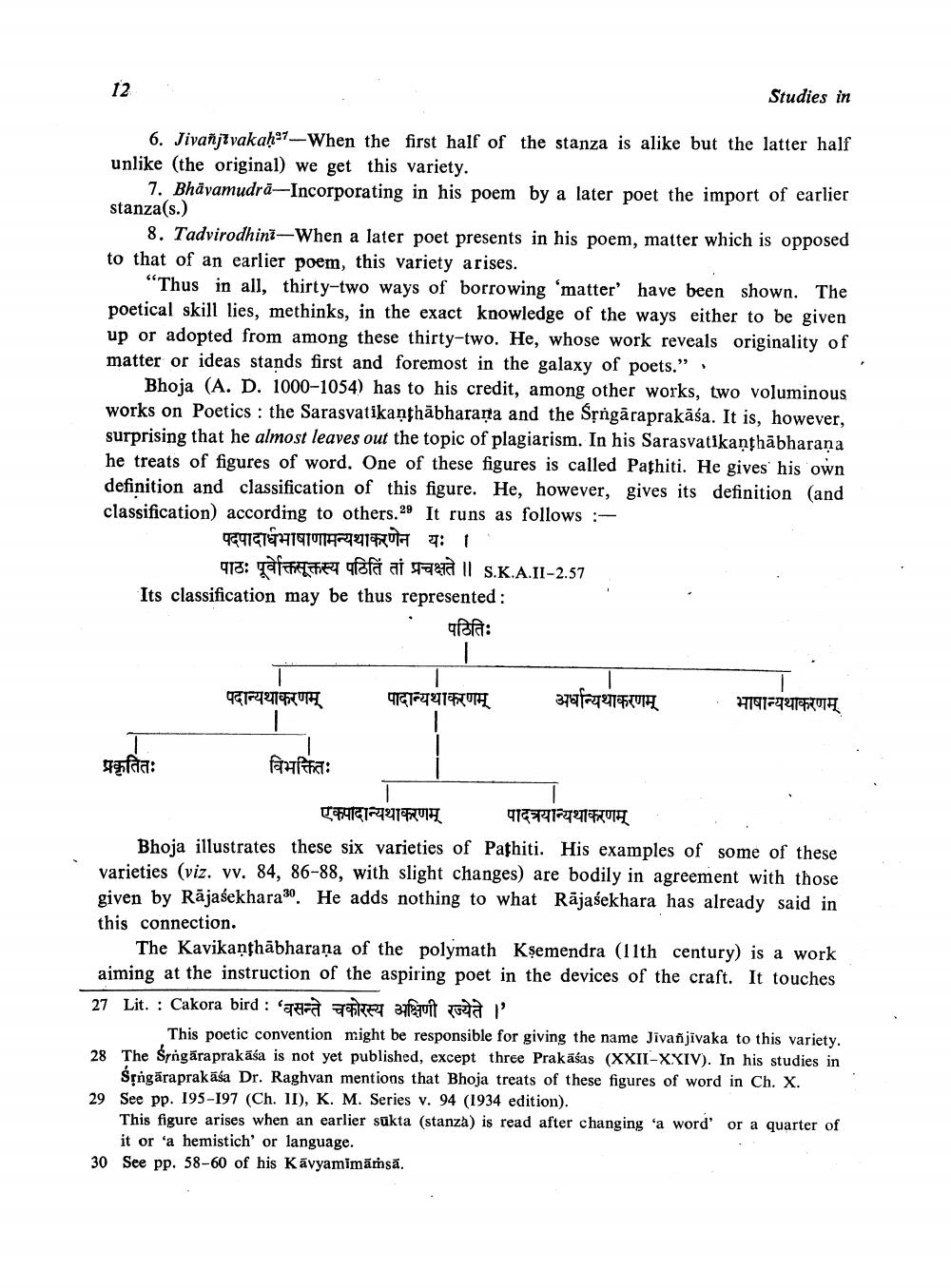________________
Studies in
6. Jivahtvaka-When the first half of the stanza is alike but the latter half unlike (the original) we get this variety.
7. Bhavamudra-Incorporating in his poem by a later poet the import of earlier stanza(s.)
12
8. Tadvirodhini-When a later poet presents in his poem, matter which is opposed to that of an earlier poem, this variety arises.
"Thus in all, thirty-two ways of borrowing 'matter have been shown. The poetical skill lies, methinks, in the exact knowledge of the ways either to be given up or adopted from among these thirty-two. He, whose work reveals originality of matter or ideas stands first and foremost in the galaxy of poets."
Bhoja (A. D. 1000-1054) has to his credit, among other works, two voluminous works on Poetics: the Sarasvatikaṇṭhābharana and the Sṛngaraprakasa. It is, however, surprising that he almost leaves out the topic of plagiarism. In his Sarasvatikanthabharaṇa he treats of figures of word. One of these figures is called Pathiti. He gives his own definition and classification of this figure. He, however, gives its definition (and classification) according to others. 29 It runs as follows:
पदपादार्धभाषाणामन्यथाकरणेन यः ।
पाठः पूर्वोक्तसूक्तस्य पठिति तां प्रचक्षते । S.K.A.11 - 2.57
Its classification may be thus represented:
पठितिः
T प्रकृतितः
पदान्यथाकरणम् I
विभक्तितः
पादान्यथाकरणम्
अन्यथाकरणम्
भाषान्यथाकरणम्
एकपादान्यथाकरणम्
पादत्रयन्यिथाकरणम्
Bhoja illustrates these six varieties of Pathiti. His examples of some of these varieties (viz. vv. 84, 86-88, with slight changes) are bodily in agreement with those. given by Rajasekhara. He adds nothing to what Rajasekhara has already said in
this connection.
The Kavikanthabharaṇa of the polymath Kṣemendra (11th century) is a work aiming at the instruction of the aspiring poet in the devices of the craft. It touches. 27 Lit. Cakora bird 'वसन्ते चकोरस्य अक्षिणी रज्येते ।'
This poetic convention might be responsible for giving the name Jivañjivaka to this variety. 28 The Śrngaraprakāśa is not yet published, except three Prakasas (XXII-XXIV). In his studies in
Śṛngaraprakasa Dr. Raghvan mentions that Bhoja treats of these figures of word in Ch. X.
29 See pp. 195-197 (Ch. II), K. M. Series v. 94 (1934 edition).
This figure arises when an earlier sukta (stanza) is read after changing a word' or a quarter of it or 'a hemistich' or language.
30 See pp. 58-60 of his Kavyamimämsä.




